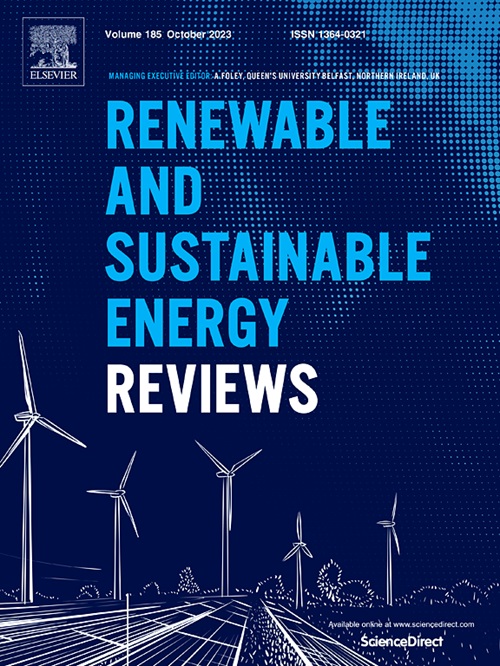Advancing green hydrogen purification: Multiscale evaluation of membrane processes using novel software, pySembrane
IF 16.3
1区 工程技术
Q1 ENERGY & FUELS
引用次数: 0
Abstract
Membrane-based separation processes are increasingly recognized as effective purification systems for green hydrogen, produced through ammonia cracking technology. These processes are valued for their energy efficiency, operational simplicity, and selective capabilities, and they benefit significantly from simulation-based approaches. Such methodologies expedite the exploration and evaluation of various membrane materials and operational strategies, which are crucial for the rapid development and optimization of membrane systems. However, the application of these simulations is often limited due to restricted access to process simulations and compatibility issues with existing commercial software tools. Additionally, the absence of software capable of assessing material properties and calculating the economic impacts at different scales limits the integration of studies from the molecular to the plant level. To address these challenges, this study introduces pySembrane, an open-source Python-based simulation package designed to lower the barriers to entry for the development and analysis of membrane systems. PySembrane provides users with advanced tools for the analysis of membrane systems, including specialized functions for evaluating material properties and process economics. This study presents case studies that illustrate the use of pySembrane in the screening of membrane materials and the optimization of membrane-based separation processes for the purification of green hydrogen. It also presents a case study on the integration of the membrane-based separation process with other unit operations, such as compressors and catalytic reactors. These case studies demonstrate the effectiveness of pySembrane in advancing membrane materials and operational strategies for green hydrogen separation, highlighting its potential to enhance process efficiency and sustainability.

推进绿色氢气纯化:使用新型软件 pySembrane 对膜工艺进行多尺度评估
人们日益认识到,膜分离工艺是通过氨裂解技术生产的绿色氢气的有效净化系统。这些工艺因其能源效率高、操作简单和选择能力强而备受推崇,并从基于模拟的方法中获益匪浅。这些方法加快了对各种膜材料和操作策略的探索和评估,对于膜系统的快速开发和优化至关重要。然而,这些模拟的应用往往受到限制,原因是获得过程模拟的途径有限,以及与现有商业软件工具的兼容性问题。此外,由于缺乏能够评估材料特性和计算不同尺度经济影响的软件,限制了从分子到工厂层面的研究整合。为了应对这些挑战,本研究介绍了 pySembrane,这是一个基于 Python 的开源模拟软件包,旨在降低开发和分析膜系统的门槛。PySembrane 为用户提供了先进的膜系统分析工具,包括评估材料属性和工艺经济性的专门功能。本研究介绍了一些案例研究,说明了 pySembrane 在筛选膜材料和优化基于膜的分离过程以提纯绿色氢气方面的应用。它还介绍了膜分离过程与其他单元操作(如压缩机和催化反应器)整合的案例研究。这些案例研究证明了 pySembrane 在推进绿色氢气分离的膜材料和操作策略方面的有效性,突出了其在提高过程效率和可持续性方面的潜力。
本文章由计算机程序翻译,如有差异,请以英文原文为准。
求助全文
约1分钟内获得全文
求助全文
来源期刊

Renewable and Sustainable Energy Reviews
工程技术-能源与燃料
CiteScore
31.20
自引率
5.70%
发文量
1055
审稿时长
62 days
期刊介绍:
The mission of Renewable and Sustainable Energy Reviews is to disseminate the most compelling and pertinent critical insights in renewable and sustainable energy, fostering collaboration among the research community, private sector, and policy and decision makers. The journal aims to exchange challenges, solutions, innovative concepts, and technologies, contributing to sustainable development, the transition to a low-carbon future, and the attainment of emissions targets outlined by the United Nations Framework Convention on Climate Change.
Renewable and Sustainable Energy Reviews publishes a diverse range of content, including review papers, original research, case studies, and analyses of new technologies, all featuring a substantial review component such as critique, comparison, or analysis. Introducing a distinctive paper type, Expert Insights, the journal presents commissioned mini-reviews authored by field leaders, addressing topics of significant interest. Case studies undergo consideration only if they showcase the work's applicability to other regions or contribute valuable insights to the broader field of renewable and sustainable energy. Notably, a bibliographic or literature review lacking critical analysis is deemed unsuitable for publication.
 求助内容:
求助内容: 应助结果提醒方式:
应助结果提醒方式:


